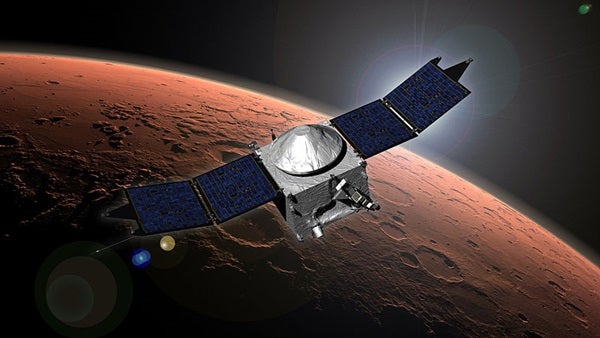Spacecraft usually have a fairly set schedule on when it will pass through any given area. So one small change could severely impact that craft’s travels, and that’s exactly what happened to NASA’s Mars Atmosphere and Volatile EvolutioN (MAVEN) spacecraft earlier this week.
MAVEN has been in an elliptical orbit around Mars for about two years, but on February 28 its velocity was increased by a hair less than 1 mile per hour (0.4 meters per second) after a rocket motor burn. The change was small, but it was enough to put estimated travel time just ahead of schedule and into the path of a collision with Mars’ moon Phobos.
After that speed adjustment, MAVEN was on track to cross Phobos’ orbit on March 6 and collide with the Moon.
NASA’s Jet Propulsion Lab monitors the potential for such collisions, and luckily the navigation teams were watching and made an additional maneuver to move MAVEN out of the path of destruction.
Bruce Jakosky from the University of Colorado in Boulder and MAVEN principal investigator said in a press release, “Kudos to the JPL navigation and tracking teams for watching out for possible collisions every day of the year, and to the MAVEN spacecraft team for carrying out the maneuver flawlessly.”










